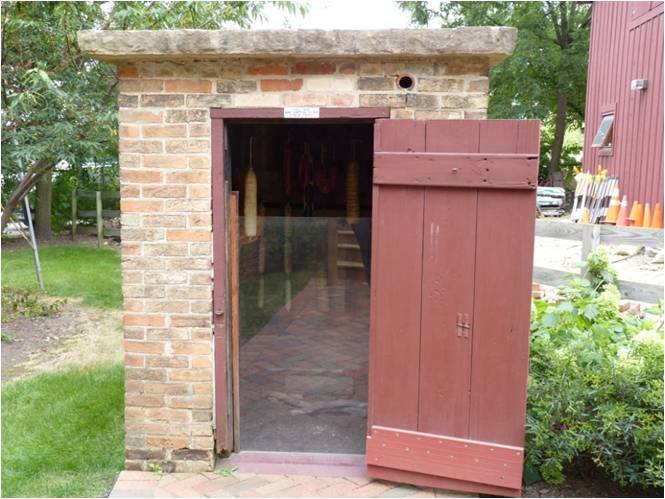
All the early settlers needed to grow their own food in order to survive. Without proper food preservation, the food they spent so much time and effort growing would be lost or even worse, make a person deathly ill. Most farms had a smokehouse—a masonry structure similar to this one, where a fire could be built on the dirt floor and kept smoldering for up to two weeks. The smoke would slowly cook the meat and infuse it with flavor. This smokehouse came from Max Gartner’s farm in south Naperville, where it had been in use for a hundred years. The walls are double thick brick, which support a limestone slab ceiling most likely hauled from one of the local quarries.
Behind the Halfway House, there is a milk house. Milk houses were used to store milk before transportation to a creamery. While this milk house was built adjacent to a barn, earlier milk houses were built on top of a creek or a river to keep milk cool. In the 1800s and early 1900s, Naperville was a dairy town, with cows outnumbering people for several decades. This milk house was originally located on the Bauer Dairy Farm and dates to the early 1900s.
Cellars, like the one on the northwest side of the Halfway House, were the ideal place to store the harvested food like fruits and vegetables, along with dairy products and preserved meat. The underground location provided insulation, keeping food cool in summer and preventing it from freezing in the winter.